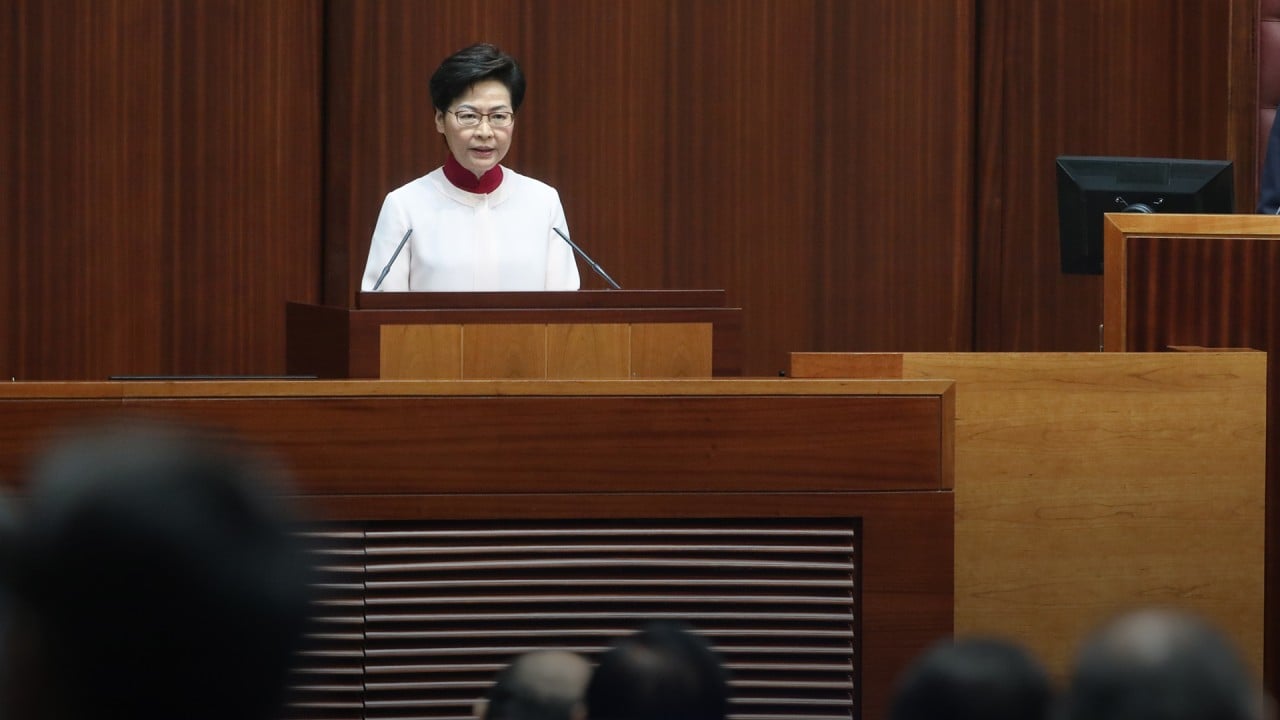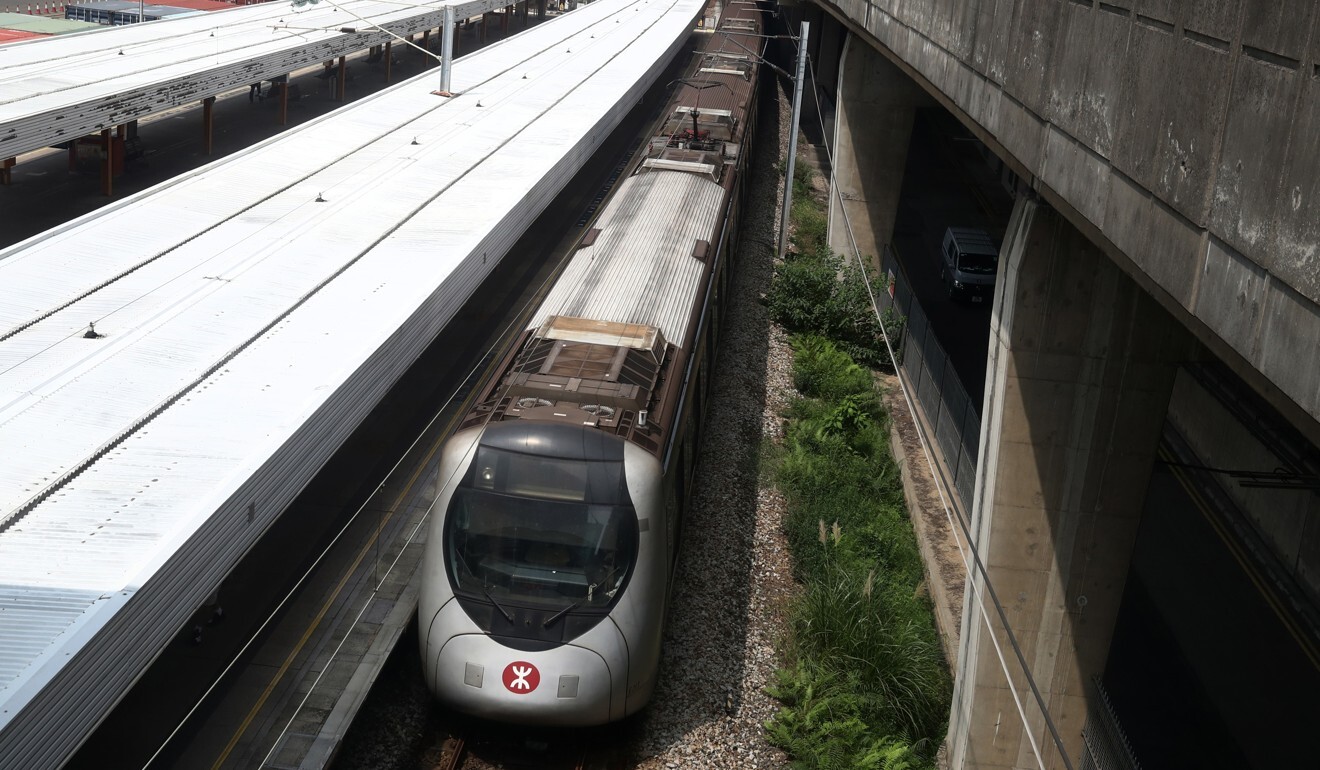
Hong Kong leader vows to cut red tape, contain costs for Northern Metropolis, points to green bonds as financing prospect for mammoth project
- Chief executive vows to ensure spending on series of major infrastructure projects is evenly distributed and managed
- Lam also assures residents that development will not cause more congestion
Hong Kong’s leader has vowed to cut red tape and contain costs for the development of a vast metropolis near the border with mainland China, raising the prospect of issuing green bonds to finance the mammoth project and ease the strain on public coffers.

03:43
Hong Kong leader Carrie Lam gives last policy address of current term, ending on emotional note
Asked whether the metropolis – without an estimated price tag attached to it yet – would incur huge public spending, Lam pointed to bonds as a way out. She said her government had been ramping up the issuance of bonds in the last few years, earning Beijing’s support.
“We will use fundraising, especially green bonds, to finance initial development stages,” Lam said. “I’m confident the project won’t be a burden on our public coffers, but will consolidate our position as an international finance centre.”
Green bonds are used by the government to fund projects that will improve the environment and facilitate the transition to a low-carbon economy.
Why Hong Kong leader Carrie Lam’s 2021 policy address was unconventional
The ambitious plan to build the Northern Metropolis near the border with Shenzhen, with an innovation and technology corridor as its engine, has been the talk of the town since she floated it on Wednesday as a major initiative to tackle Hong Kong’s acute shortage of affordable housing.
The metropolis, which will include existing towns in Tin Shui Wai, Yuen Long, Fanling and Sheung Shui, and their neighbouring rural areas, as well as six new development zones under planning or construction, aims to house 2.5 million people in 20 years.
The development would create up to 68,000 new jobs related to innovation and technology, according to Lam.

Her proposal marks a substantial change in development strategy, moving away from Hong Kong Island to the north to enable greater integration with China’s latest national development plan.
A cross-border railway and four local rail links spanning the northern New Territories have also been proposed to complement the development of the metropolis.
Asked whether she could reduce the development time frame for building the Northern Metropolis by at least five years, Lam said she planned to review several pieces of legislation to expedite the process.
Northern Metropolis plan praised but questions raised over financing
“Many laws are involved, including the Town Planning Ordinance and others related to reclamation and roads,” she said.
“Usually there will be a lot of opposing voices when we are to build a new highway, for example, so we need to review all these ordinances. Rest assured we will streamline the procedures.”
Before her question and answer session with lawmakers, the chief executive also sought to reassure residents during a radio phone-in programme that her proposal would not create new problems for society, such as worsening the traffic congestion between the New Territories and the city centre.
But Hung Wing-tat, a retired transport policy scholar from Polytechnic University, questioned the feasibility of the project’s railway proposals.

He also pointed to one of the railway proposals that would involve building an automated people-mover system from Tsim Bei Tsui to Pak Nai near ecologically sensitive wetlands.
“I don’t understand the purpose ... Most people walking along there are bird watchers, and most local residents cycle out to the main road and take minibuses,” he said.
“She’s trying to meet some responsibility [and be] proactive in addressing calls from Beijing, but then none of her plans are concrete.”
Paul Zimmerman, CEO of Designing Hong Kong, a concern group on urban planning issues, said Lam should have addressed the need to enhance boundary-crossing facilities for vehicles to improve traffic.
Many more vehicles would be crossing between Hong Kong and Shenzhen, he argued, which could have a knock-on effect on traffic between Kowloon and Hong Kong Island.
The chief executive acknowledged that previously built new towns were not self-sustaining, so many residents had no choice but to commute to work elsewhere, but she did not expect the same situation with the new metropolis.
There would be ample job opportunities, especially in innovation and technology, given its proximity to Shenzhen, she said.
Lam also told lawmakers she would take an “innovative approach” to create more jobs in other traditional sectors, such as by resuming brownfield sites for the logistics industry.
The government would also move a number of offices currently located in Admiralty to the new metropolis, she said, which would help balance the traffic flow.
Ling Kar-kan, the government’s strategic planning adviser for Hong Kong-Shenzhen cooperation, said on Wednesday that future residents of the Northern Metropolis would be able to take up jobs in the area without having to commute to Kowloon or Hong Kong Island.
But he conceded the plan did not include adding new transport links to the existing urban centres, and agreed there was a need for a comprehensive study in that respect.


